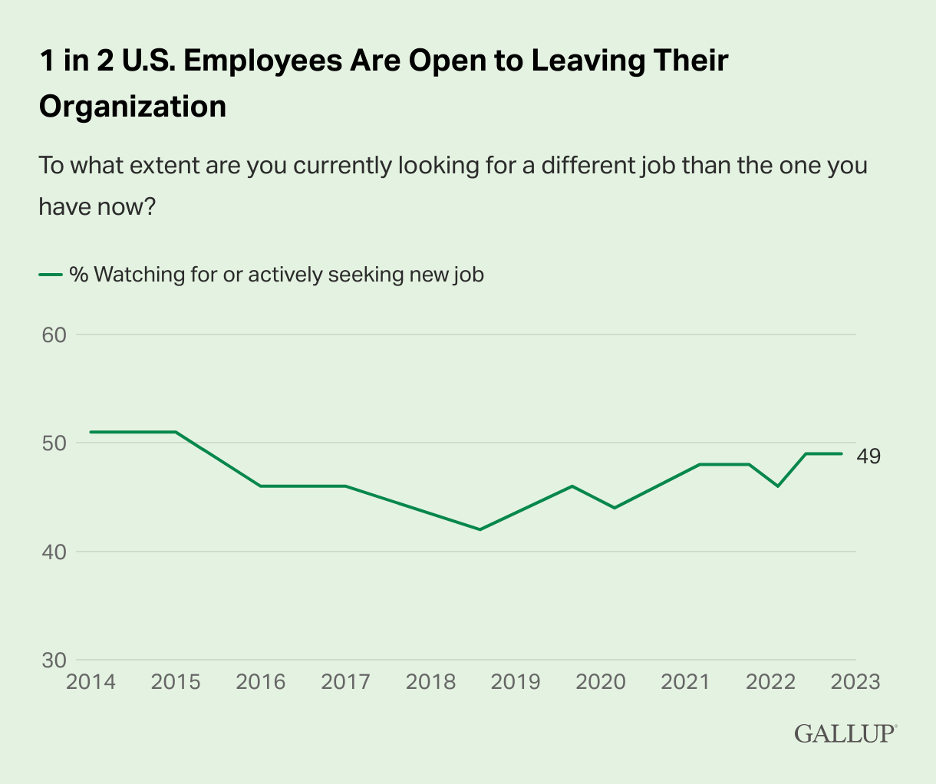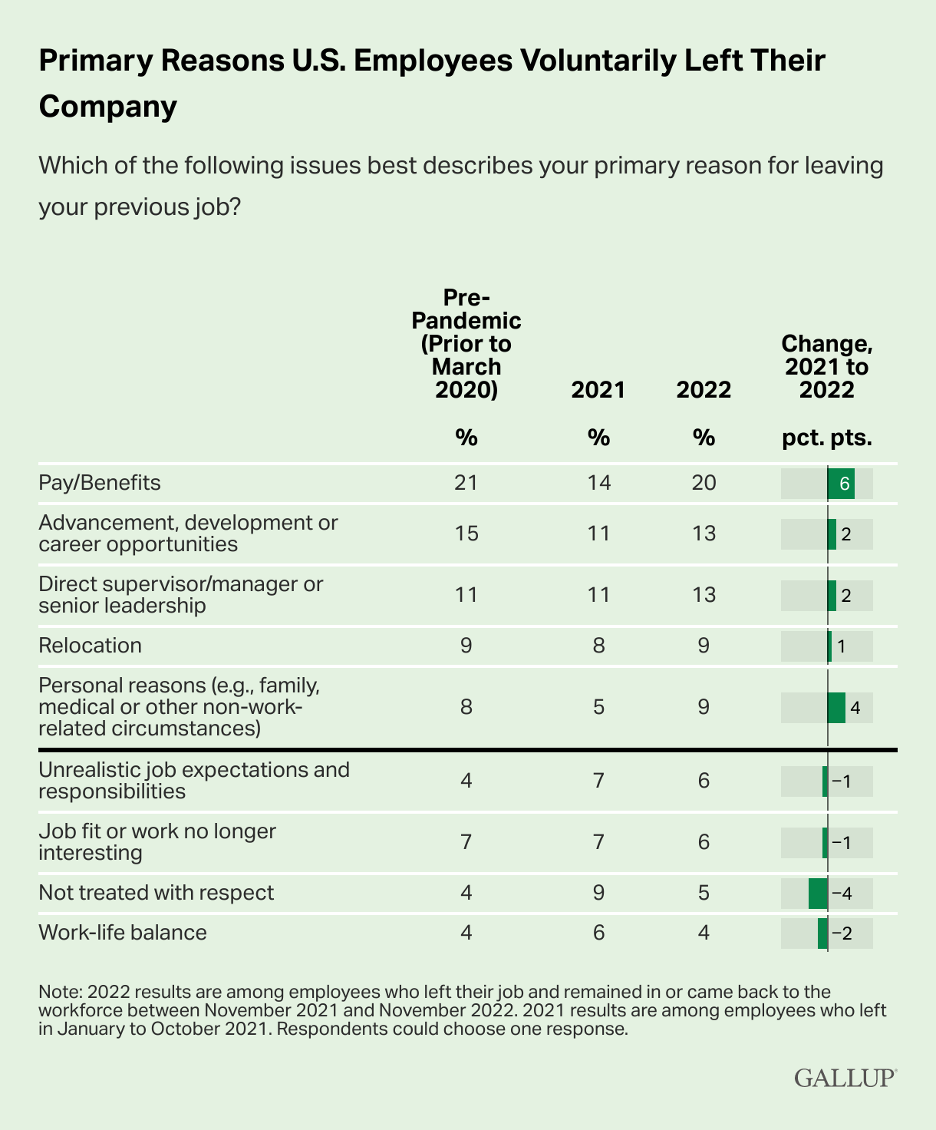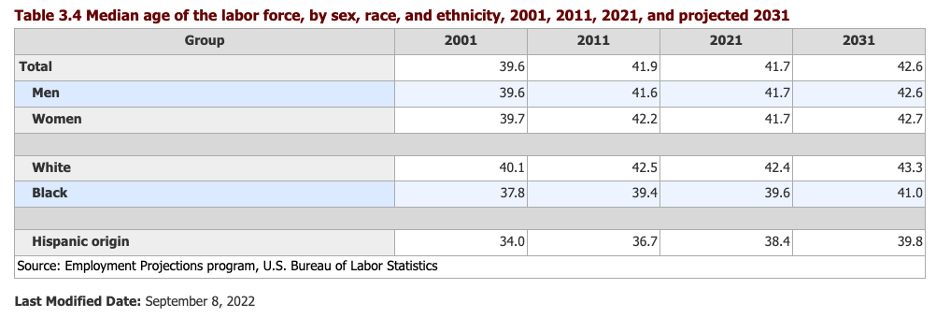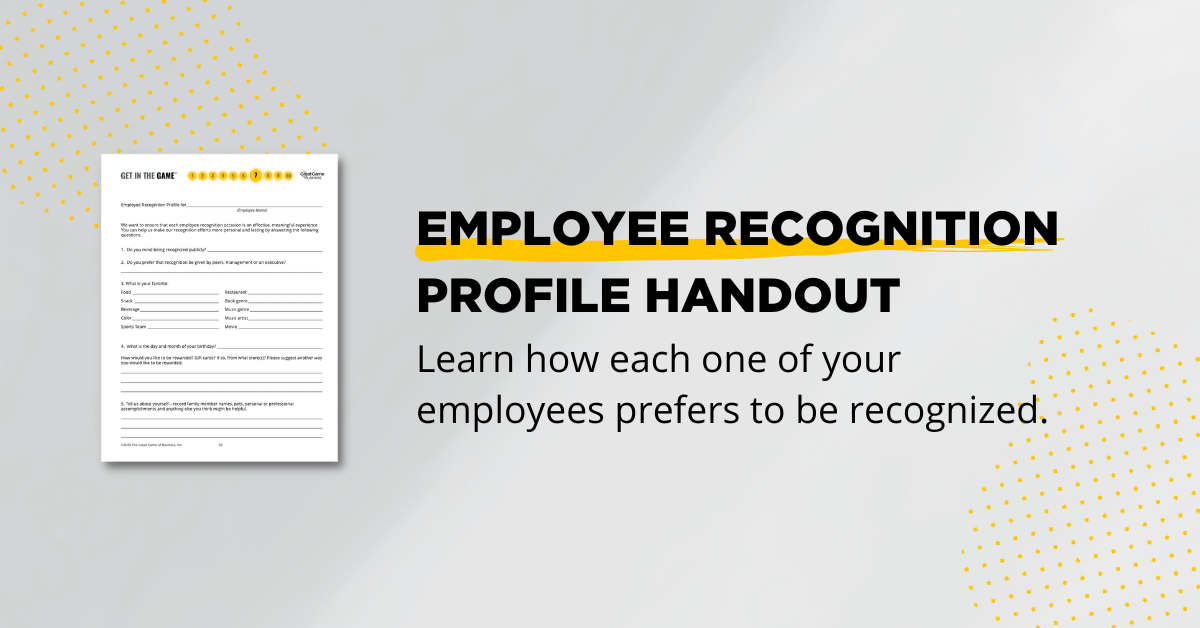Table of Contents

If you own a business or run one, you know there are plenty of challenges waiting at your desk for you every morning.
But of all the problems that might visit you, one of the most serious is poor employee retention. Look out at your office now or the shop floor and imagine what it would look like if half of those people were gone.
Many businesses couldn’t survive losing half of their employees, and yet that’s what the data suggests could happen. (See Chart 1)
Chart 1

According to Gallup, 49% of employees surveyed said they were currently looking for a different job than the one they have right now. Even worse, when they leave, only 28% say they would recommend their current position to someone else.
Why are they leaving? (See Chart 2)
The four top reasons employees are ready to move on are:
-
Low Pay and Benefits
-
Lack of Career Opportunities
-
Relationship to Management
-
Need to Relocate
Chart 2

Unless your company has an office where a current employee wants to move or can accommodate remote workers (which many industries cannot), there’s not much we can do about the fourth reason.
But there is a lot that owners and CEOs can do about the top three. But first, it helps to understand why employee retention is an issue in the first place.
Why is employee retention such a problem now
Employee retention is difficult today primarily due to the changing nature of the workforce, the expectations of employees, and issues related to management.
The two primary drivers of the changing workforce are demographics and technology.
As the American population changes, Boomers are now aging out, retiring out of jobs that will be taken up by younger workers.

These younger employees are mobile, capable of working from anywhere, and seeking new opportunities that offer better pay, benefits, or career growth. They place a high value on work-life balance, flexible work arrangements, and positive company culture.
Additionally, employees today are more likely to leave their jobs due to dissatisfaction with their managers, which we saw in the Gallup data. Poor communication, lack of support, micromanagement, and other managerial issues can drive employees away from their jobs.
As the median age of the labor force rises, we expect finding new workers to become an even more pressing challenge for companies. A far better approach is to retain them if they can.
It’s not all about compensation
Yes, the Gallup data showed that 1 in 5 employees that plan to leave a company say it’s about the pay – that data alone screams the importance of paying people both competitively and fairly, but the truth is, pay alone is not enough to keep a person at a job.
Company owners and CEOs who think the compensation package will solve the employee retention problem are mistaken. It takes more than money to make a workplace “sticky.” Money is usually not the primary motivator for employees because motivation is a complex phenomenon influenced by various factors that go well beyond financial compensation.
Research has consistently shown that the salary is not the most effective motivator for employees in the long run. Instead, many employees are motivated by other factors, including meaningful work, career growth, autonomy, recognition, and positive work culture.
Employees want to feel that their work is meaningful and contributes to a larger purpose. They want to know that their efforts matter and that they are making a positive impact in some way. When employees feel connected to their work and believe it has a purpose beyond just earning a paycheck, they are more likely to be motivated and engaged.
Employees are also placing a higher value on autonomy and control over their work. This came to everyone’s attention during the pandemic, but it’s been going on as long as laptops allowed employees to work effectively from home. They want to have some say in how they perform their job and the freedom to make decisions about their work. When employees are given autonomy and the opportunity to take ownership of their work, they are more likely to be motivated and committed.
Employees want career growth opportunities
We also know that employees, especially younger workers, seek opportunities for career growth and development. They want to learn new skills, take on new challenges, and advance in their careers. When employees see a clear path for career advancement and are given opportunities to grow and develop, they are more likely to feel motivated and committed to their employer.
-1.png?width=85&height=85&name=Coachs%20Tip%20Chat%20Bubble%20(1)-1.png) Employees want to see their future with a company. They don’t want to be stuck in a position where their pay and growth will be stagnant. See how we’ve started laying out career paths for employees through our succession development planning process.
Employees want to see their future with a company. They don’t want to be stuck in a position where their pay and growth will be stagnant. See how we’ve started laying out career paths for employees through our succession development planning process.
You can offer career growth by providing opportunities for employees to attend training and development programs, conferences, seminars, online certifications, and networking opportunities. Mentorship programs can also be an effective way to help young talent develop their skills and knowledge.
Bad supervisors drive employees away
It’s no secret that having good direct supervisors and managers is crucial for the success of any company. They play a significant role in shaping the work environment, employee satisfaction, and overall team performance. Poor managers, on the other hand, can have a detrimental impact on employee retention and drive talented individuals to seek opportunities elsewhere. In fact, studies have consistently shown that ineffective management is one of the top reasons employees leave their jobs.
According to a survey by Monster, 59% of employees reported that their immediate supervisor was the primary reason they considered leaving their job. Similarly, a study published in the Harvard Business Review found that employees who reported having unsupportive or incompetent managers were 60% more likely to suffer from burnout.
Effective managers create a positive work environment where employees feel valued, motivated, and engaged. They also foster open communication, provide constructive feedback, and address any concerns promptly. In contrast, poor managers often lack the necessary leadership skills, resulting in confusion, demotivation, and a lack of direction among their team members. They can also contribute to a toxic work environment resulting in decreased morale across the organization.
So what does a bad manager look like? Below we’ve listed behaviors that may signal an organization has the wrong person in a leadership seat.
Signs of a bad manager:
- Micromanaging associates
- No concern for professional development
- Poor communication
- Absence of empathy
- Moods, tempers
- Showing favoritism
- Disorganization
- Fail to provide necessary resources and support
These behaviors can lead to frustration, disengagement, and, ultimately, the decision to leave the company in search of better management and growth opportunities.
This is why it’s so important to ensure your organization has the right people in managerial seats. At The Great Game of Business, we believe that organizational change starts with the right leadership.
To create a strong workplace culture conducive to employee happiness, we believe leaders should possess these characteristics:
- Humility—”I don’t have all the answers.”
- Vulnerability—”I’m willing to ask for help.”
- Servant leadership—”I’m focused on the needs of the team and the company, not my own.”
- Courage—”I’m ready to open up and release control.”
The Great Game of Business also places high importance on providing rewards and recognition to employees. A huge part of being an effective manager is showing recognition.
Give personalized appreciation and learn how your employees prefer to be recognized with our employee recognition profile.
Employees want to be recognized and appreciated for their hard work and contributions. They want to feel valued and respected by their employer, supervisor, and colleagues. They want to know when they’re doing a good job and that what they’re doing is making a difference – that they’re a valuable player in the game the company is playing.
To retain and build their workforce, employers must create a positive work environment that fosters meaningful work, career growth, autonomy, recognition, and a strong sense of purpose.
Want to learn more about The Great Game of Business and how open-book management could benefit your organization?
Download our original book or get started with a free chapter.

Other items you might like:



.png#keepProtocol)








.png#keepProtocol)
More Stories
Level Up Your Career With These 7 Professional Development Tips
Donald Trump Gets a Solution to His Cash Problem
Crypto Exchange Gemini To Refund $1.1B To Earn Program Customers